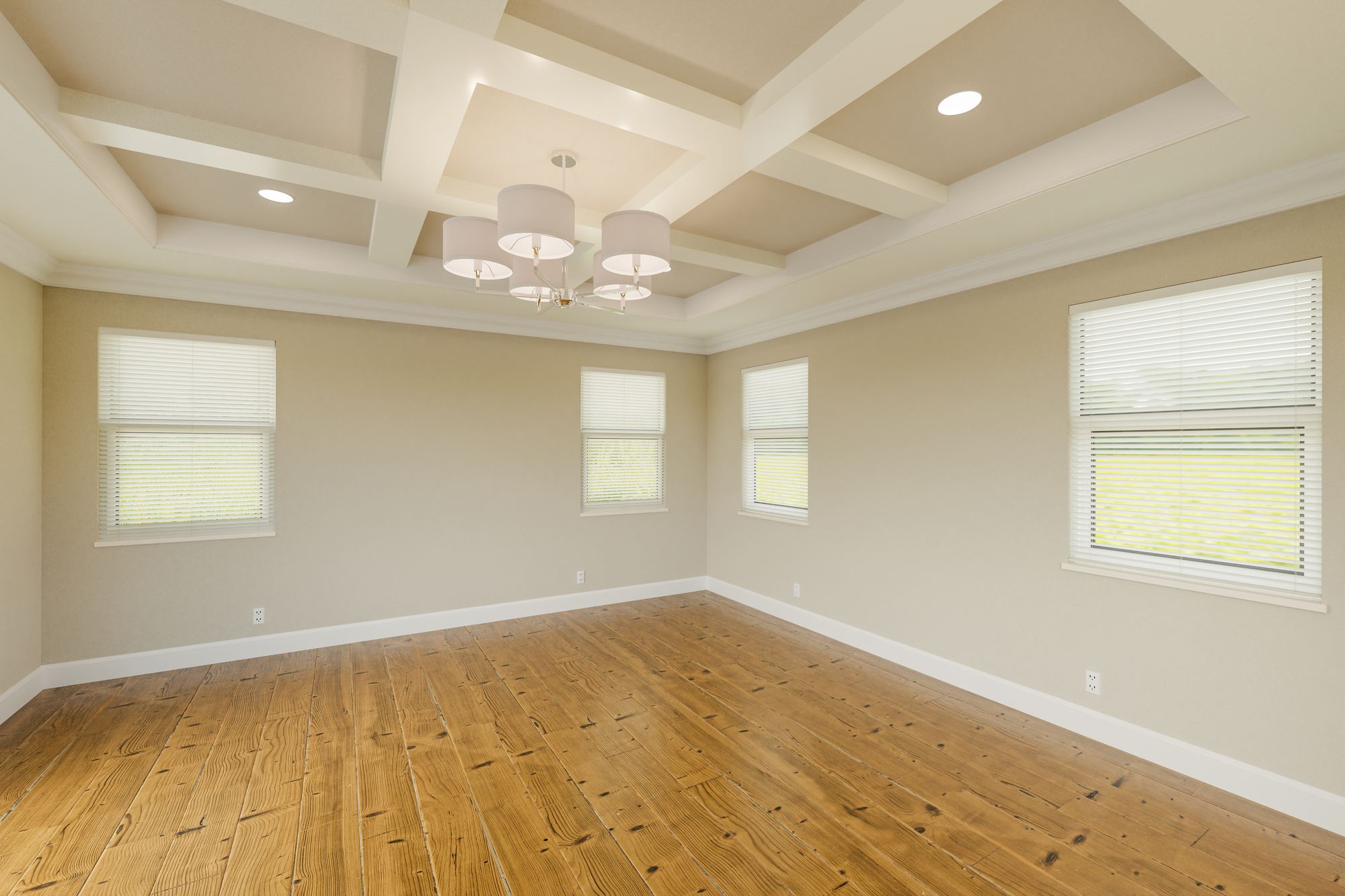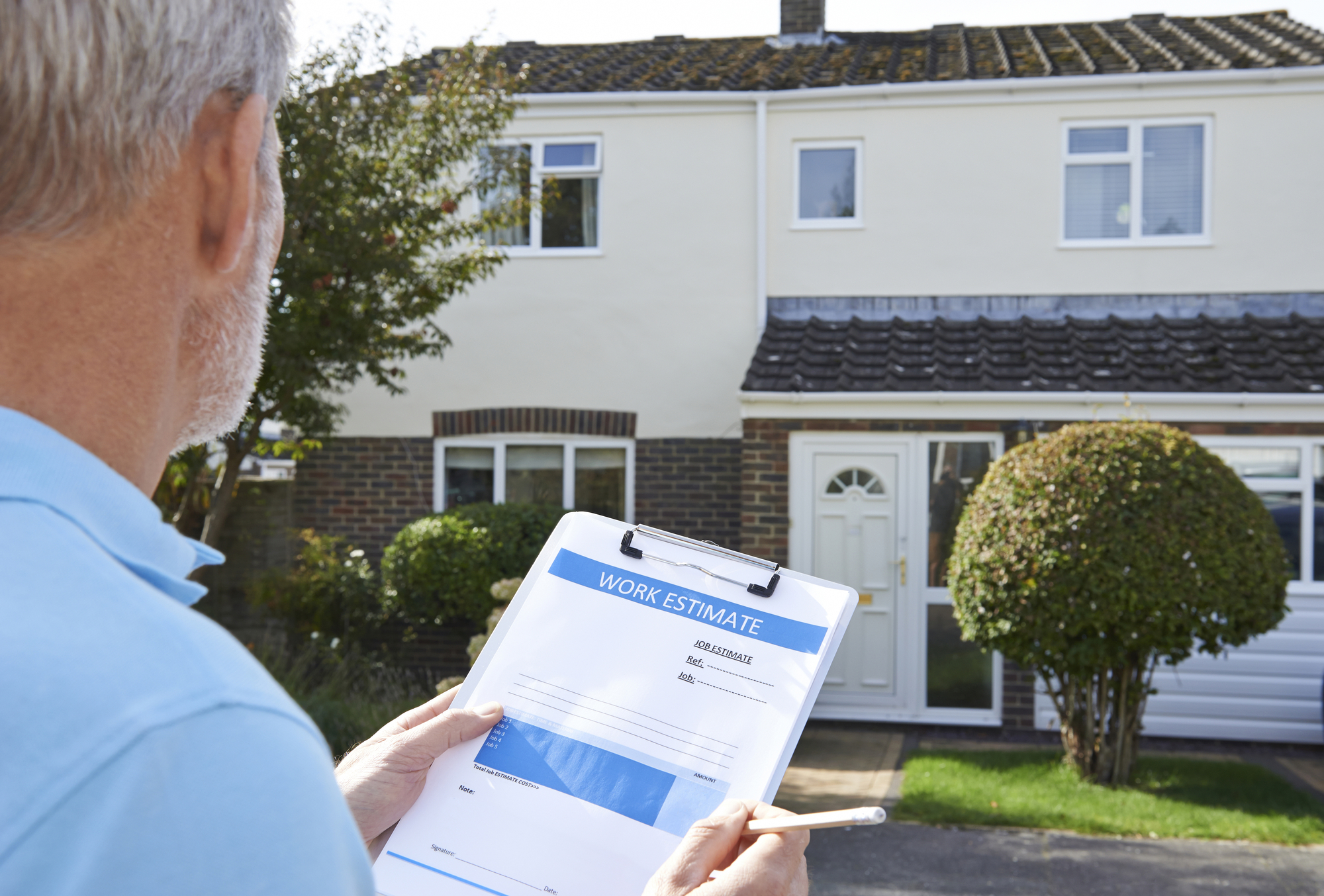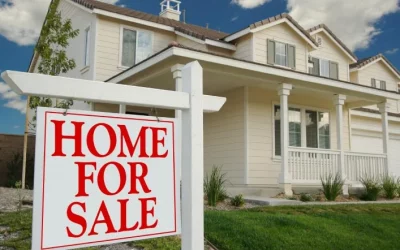However, this blog article will provide a comprehensive guide on estimating your house’s potential selling price. You can understand your house’s approximate market value by following the steps below.
Please note that the information provided in this article is for general informational purposes only and should not be considered professional advice. For a precise valuation, it is recommended to consult a local real estate agent or a licensed appraiser.
Table of Contents:
Introduction
- Size and Layout
- Condition and Upgrades
- Amenities and Features
Real Estate Agents and Appraisers
- Role of Real Estate Agents
- The Importance of Property Appraisals
Factors Affecting Property Value
- Location
- Neighborhood
- School District
- Market Demand and Supply
- Economic Growth
- Interest Rates
- Pros and Cons
- Accuracy and Limitations
- Competitive Market Analysis (CMA)
- Overpricing vs. Underpricing
- Negotiation Room
- First Impressions Matter
- Simple DIY Improvements
- Hiring Professional Stagers
- Online Listings
- Professional Photography
- Open Houses and Showings
- Evaluating Offers
- Negotiation Tips
- Understanding Contingencies
- The Closing Process
Understanding the Market
When selling your home, understanding its true worth is crucial. Assessing your property is the first step towards pricing it right and attracting potential buyers.
This blog article will explore the critical elements of property assessment: Size and Layout, Condition and Upgrades, and Amenities and Features. By closely examining these aspects, you’ll gain valuable insights into your home’s market value, ensuring a successful and rewarding selling experience.

- Size and Layout:
Buyers often look for homes with ample space and a functional layout that meets their lifestyle needs. Here’s how to assess this aspect of your property:
Measure Your Home’s Square Footage:
Accurate measurement is crucial. You can use a measuring tape to dictate the square footage of each room and the overall living area. If you need more time, consider hiring a professional appraiser.
Evaluate Room Sizes and Flow:
Assess how well each room flows into the next. Open floor plans that create a seamless transition between spaces are highly desirable.
Consider the Number of Bedrooms and Bathrooms:
Homes with more bedrooms and bathrooms generally command higher prices, as they accommodate larger families or provide additional space for guests and home offices.
Outdoor Living Spaces:
Don’t forget to include outdoor areas like decks, patios, and gardens in your assessment, as they add value and expand the living space.
- Condition and Upgrades:
The condition of your home and any upgrades you’ve made significantly influence its market value. Buyers prefer properties that are well-maintained and up-to-date.
Here’s how to assess this aspect:
Inspect for Repairs:
Check for any repairs needed, such as leaks, damaged roofing, or faulty electrical systems. Fixing those issues before listing your home can increase its value and attract more buyers.
Upgrades and Renovations:
Take note of any upgrades you’ve made, such as a modern kitchen, renovated bathrooms, or energy-efficient appliances. These enhancements can add significant value to your home.
Curb Appeal:
Assess the exterior of your property, including landscaping, paint, and overall curb appeal. First impressions matter; a well-maintained exterior can boost your home’s value.
Energy Efficiency:
Homes with energy-efficient features, such as double-pane windows, insulation, and smart thermostats, are highly appealing to buyers looking to reduce utility costs.
- Amenities and Features:
Your home’s amenities and unique features can set it apart from others. Identifying and showcasing these distinctive qualities can increase its perceived value.
Here’s how to assess this aspect:
Special Features:
Take note of any special features your home offers, such as a fireplace, pool, spa, or stunning view. These features can be significant selling points.
Neighborhood Amenities:
Consider amenities the neighborhood offers, such as proximity to parks, schools, public transportation, and shopping centers. A convenient location adds value to your home.
Home Security:
If your property has a robust security system or is situated in a gated community, emphasize this, as it can attract buyers seeking safety and peace of mind.
Smart Home Technology:
Homes equipped with intelligent home features, like integrated bright lighting, security cameras, and voice-controlled devices, are becoming increasingly desirable to tech-savvy buyers.
Assessing your property based on Size and Layout, Condition and Upgrades, and Amenities and Features is essential to understanding its market value accurately. By carefully evaluating these aspects, you’ll be better equipped to set a competitive asking price and appeal to potential buyers.
Monitor local market trends and consult with real estate professionals or appraisers to get the most accurate valuation of your home. With a well-assessed property and an informed pricing strategy, you’re on your way to a successful home-selling journey.
Real Estate Agents and Appraisers
Real estate transactions involve significant financial investments and complex legal processes. To navigate this landscape successfully, individuals and businesses must rely on the expertise of real estate agents and appraisers.
Both professionals contribute unique skills to ensure fair and accurate property valuations, facilitate smooth transactions, and protect the interests of their clients.
The Role of Real Estate Agents
Responsibilities of Real Estate Agents.
Real Estate Agents wear many hats, and their responsibilities include:
- Assisting clients in buying or selling properties.
- Conducting market research to determine property values and appropriate pricing.
- Marketing properties through various channels, including online listings, open houses, and print media.
- Facilitating negotiations between buyers and sellers to reach mutually beneficial agreements.
- Handling paperwork and legal documentation to ensure a smooth transaction.
- Providing guidance and advice throughout the buying or selling process.
Benefits of Working with a Real Estate Agent.
Collaborating with a real estate agent offers numerous advantages, for example:
- Access the (MLS) ” Multiple Listing Service” and comprehensive property listings.
- Expert negotiation skills to secure the best deal.
- Market knowledge is crucial because it helps clients make informed decisions.
- Assistance with complex paperwork and legalities.
- Saving time and effort in searching for properties or buyers.
Finding the Right Real Estate Agent.
Choosing the right real estate agent is crucial. Consider factors like experience, expertise in your local market, client reviews, and communication skills—interview multiple agents to find the one that best aligns with your needs and goals.

The Importance of Property Appraisals
What is a Property Appraisal?
A property appraisal is an evaluation of a property’s value. Licensed appraisers are trained in property valuation techniques and conduct reviews. Their objective is to determine the market value of a property based on various factors.
The Appraisal Process The appraisal process involves:
- Inspect the property to assess its condition, features, and improvements.
- Analyze comparable sales (comps) in the neighborhood to gauge market trends.
- Considering factors like location, size, layout, condition, and amenities.
- Preparing a detailed appraisal report outlining the property’s value and the reasoning behind the valuation.
Factors Considered in Property Appraisals.
Appraisers take into account several factors, including
- Property size and location.
- Recent sales of comparable properties.
- Property condition and any upgrades or renovations.
- Economic trends are affecting the local real estate market.
Why Property Appraisals Matter.
Property appraisals are critical for various real estate transactions:
- Ensuring fair pricing for buyers and sellers.
- Securing financing from lenders during the home-buying process.
- Establishing property values for tax assessment purposes.
- Resolving disputes or legal matters involving property valuations.
Factors Affecting Property Value:
In real estate, property valuation is an intricate process involving many factors. From the geographical location and neighborhood characteristics to school districts, market demand, economic growth, and interest rates, every element plays a pivotal role in determining the true worth of a property.

Factors Affecting Property Value
Location is considered the most crucial factor affecting property value. The physical location of a property influences not only its intrinsic worth but also its appeal to potential buyers and investors.
Proximity to Urban Centers.
Properties close to vibrant urban centers are highly desirable due to easy access to amenities, job opportunities, and cultural attractions. As a result, such properties tend to command premium prices.
Access to Transportation and Infrastructure.
Properties, convenience; public transportation, major highways, and airports offer significant advantages to residents, contributing to higher property values.
Geographical Features and Climate.
Natural features such as scenic views, waterfront locations, and favorable climates add allure to a property and can elevate its value.
Neighborhood Associations and Zoning Regulations.
Well-maintained neighborhoods with active associations and strict zoning regulations often preserve property values by maintaining consistent community standards.
- The Role of Neighborhood
The neighborhood surrounding a property plays a vital role in shaping its value. Buyers often look beyond the property to the amenities, safety, and sense of community the neighborhood offers.
Safety and Crime Rates.
Neighborhoods with lower crime rates and a strong sense of security tend to be more attractive to buyers, influencing property values positively.
Quality of Schools and Educational Institutions.
The presence of top-rated schools and educational institutions in the vicinity significantly enhances the desirability of a neighborhood, leading to higher property values.
Amenities and Community Facilities.
Proximity to parks, recreational facilities, shopping centers, and dining options can boost a neighborhood’s appeal and impact property values.
Sense of Community and Demographics.
A vibrant community with diverse demographics and inclusivity can create a welcoming environment that attracts buyers and contributes to higher property values.
- The Significance of School Districts
School districts play a critical role in determining property values, as families often prioritize access to quality education when choosing a place to live.
How School Districts Affect Property Value.
Homes located within highly-rated school districts often experience higher demand, leading to increased property values.
The Connection Between Education and Real Estate.
Quality education is a significant driver for homebuyers, and areas with renowned schools tend to attract families willing to invest more in their homes.
School Rankings and Home Prices.
Properties in top-ranking school districts typically command premium prices due to the perceived value of an excellent education for children.
- Market Demand and Supply
The interplay between market demand and supply profoundly impacts property values, often dictating the pace and direction of the real estate market.
The Dynamics of Supply and Demand.
When demand exceeds supply, property values rise as buyers compete for limited inventory. An oversupply of homes can lead to decreased property values.
Seller’s Market vs. Buyer’s Market.
In a seller’s market, where demand outweighs supply, sellers have the advantage and can set higher asking prices. The opposite is true in a buyer’s market, leading to more negotiation power for buyers.
Impact of Inventory Levels on Property Values.
Fluctuations in inventory levels can influence property values. Low supply creates a sense of urgency among buyers, leading to higher prices, while high stock may result in reduced values.
- Economic Growth and Real Estate
Economic growth is a crucial determinant of property values, as a robust economy can fuel demand for housing and lead to an appreciation in property prices.
Understanding the Economic Cycle.
Real estate markets are influenced by economic cycles, including expansion, contraction, and recovery periods.
Job Market and Employment Opportunities.
A strong job market and employment opportunities attract workers to an area, driving housing demand and positively impacting property values.
Infrastructure Development and Property Values.
Investments in infrastructure, such as transportation, utilities, and public facilities, can enhance the appeal of an area and contribute to higher property values.
- The Ripple Effect of Interest Rates
Interest rates have far-reaching effects on the real estate market, impacting home affordability and demand.

The Relationship Between Interest Rates and Property Values.
Lower interest rates can stimulate demand for housing by making mortgages more affordable, leading to increased property values.
Affordability and Mortgage Rates.
As interest rates rise, mortgage payments increase, potentially affecting buyers’ purchasing power and influencing property values.
Impact on Home Buying and Investment Decisions.
Fluctuations in interest rates can influence the decision-making of both homebuyers and real estate investors, shaping the demand for properties.
- Navigating Property Value Fluctuations
Property values are subject to fluctuations influenced by external factors and market volatility.
External Factors and Market Volatility.
Changes in economic conditions, government policies, and global events can lead to fluctuations in property values.
Long-Term vs. Short-Term Investments.
Property values may experience short-term fluctuations, but long-term investments in real estate tend to provide more stable and appreciating returns.
Mitigating Risk and Maximizing Returns.
Diversification, thorough research, and prudent decision-making are essential in navigating property value fluctuations and maximizing investment returns.
- Technological Advancements in Property Valuation
Advancements in technology have revolutionized property valuation and provide valuable tools for buyers, sellers, and investors.
AI and Machine Learning Artificial intelligence.
Machine learning algorithms can analyze vast data to generate accurate property valuations.
Big Data and Predictive Analytics.
Big data analytics provide real-time market insights, enabling stakeholders to make informed decisions.
Blockchain and Real Estate Transactions Blockchain
This technology has the potential to streamline real estate transactions, improving transparency and reducing transaction costs.
The Psychology of Property Value
The emotional and psychological factors of buyers and sellers significantly influence property values.
Emotional Factors in Home Buying.
Emotional attachment to a property can impact buyers’ willingness to pay a premium for their dream home.
Perceived Value vs. Market Value.
Perceptions of value vary among buyers, and sellers should be mindful of market conditions to set realistic asking prices.
Strategies for Pricing Your Property Right.
Accurate pricing is essential for attracting buyers and achieving a successful sale within a reasonable timeframe.
Property valuation is a multifaceted process influenced by a myriad of factors. The location, neighborhood, school district, market dynamics, economic growth, and interest rates contribute to a property’s worth.
By understanding the significance of these factors, buyers, sellers, and investors can make informed decisions in the ever-evolving real estate market. Armed with this knowledge, you’ll be better equipped to navigate the complexities of property valuation.
Whether you’re seeking your dream home, maximizing returns on a property sale, or making strategic investments, a comprehensive understanding of these factors will be your compass in the dynamic world of real estate.
Online Valuation Tools
As technology continues to shape the real estate industry, online valuation tools have emerged as popular resources for property owners and prospective buyers. These tools promise quick and easy property valuations, making them enticing options for those seeking instant information about their home’s worth. However, it’s essential to recognize that while online valuation tools have their benefits, they also come with limitations that may impact their accuracy.
- The Pros of Online Valuation Tools
Instant Property Estimates.
One of the primary advantages of online valuation tools is their ability to provide instant property estimates. Users can enter their property’s address, and the tool generates a valuation in seconds.
User-Friendly Interface.
Most online valuation tools feature user-friendly interfaces that make them accessible to individuals with limited knowledge of real estate and valuation concepts.
Cost-Effective.
Many online valuation tools are accessible, offering property owners and potential buyers a cost-effective way to obtain a property estimate without hiring a professional appraiser.
Useful for Initial Research.
Online valuation tools can be valuable for preliminary research, giving property owners an idea of their home’s potential value and aiding buyers in assessing property affordability.
- The Cons of Online Valuation Tools
- a) Lack of Personalization.
Online valuation tools use algorithms and data analytics to estimate property values. Still, they do not consider unique features or upgrades that may impact a property’s worth.
Limited Data Input.
These tools rely on publicly available data and may not consider recent renovations, property conditions, or neighborhood changes that could influence value.
Inaccurate Estimates for Unique Properties.
Properties with unique characteristics, such as historical significance or unconventional architecture, are challenging for online valuation tools to assess accurately.
Variability Across Platforms.
Different online valuation tools may produce varying estimates for the same property, causing confusion and uncertainty for users.
- Accuracy of Online Valuation Tools
Data Source and Reliability.
The accuracy of online valuation tools largely depends on the quality and reliability of their data sources. Some tools pull data from public records, while others use MLS or user-submitted information.
Geographic Specificity.
Online valuation tools may have varying accuracy depending on the region and locality they cover. Some tools with ample data may perform better in urban areas, while others may struggle in rural or less populated regions.
Current market conditions can influence Market Conditions.
The accuracy of online valuation tools. In rapidly changing markets, these tools must reflect up-to-date trends and shifts in property values.
Limitations for Complex Properties.
Properties with unique features, extensive renovations, or non-standard layouts may challenge online valuation tools, leading to less accurate estimates.
- Limitations of Online Valuation Tools
Lack of Human Expertise.
Online valuation tools need more expertise and discernment of human appraisers who can evaluate a property’s condition, improvements, and overall market appeal.
Not Suitable for Specialized Properties.
Properties such as commercial real estate, luxury homes, and unique investment properties require specialized valuations that online tools cannot provide.
Overlooking Non-Monetary Factors.
Online valuation tools focus primarily on monetary value and may not consider intangible factors, such as sentimental value or local community dynamics, that can impact a property’s worth.
Risk of Overvaluation or Undervaluation.
Reliance solely on online valuation tools can lead to overestimating or underestimating a property’s value, potentially affecting pricing strategies for sellers or purchase decisions for buyers.
- Seeking Professional Valuation Advice
The Role of Professional Appraisers brings expertise, experience, and a human touch to property valuations. To provide accurate and comprehensive valuations, they consider various factors, including property conditions, market trends, and local nuances.
When to Seek Professional Advice.
While online valuation tools can offer quick estimates, seeking a professional appraisal is crucial for high-stakes transactions, such as refinancing, divorce settlements, estate planning, or selling unique properties.
Property Market Expertise.
Professional appraisers have an in-depth understanding of the local property market, enabling them to provide valuations based on current market conditions and trends.
Human Judgement and Attention to Detail.
Professional appraisers conduct physical inspections of properties and carefully analyze data, incorporating nuances that online tools may overlook.

Online valuation tools have revolutionized how property owners and buyers access property estimates. They offer convenience and speed, making them valuable for preliminary research and general property awareness.
However, these tools have limitations that can impact their accuracy, especially for unique or specialized properties. For critical transactions or properties requiring a more comprehensive valuation, seeking the expertise of a professional appraiser is essential. Balancing the benefits of online valuation tools with the insights of human appraisers can provide property owners and buyers with a well-rounded approach to property valuation, ultimately empowering them to make informed decisions in real estate.
Setting the right price for a property is a critical step in the real estate journey, whether you are selling or buying. Pricing goes beyond mere numbers; it requires a deep understanding of market dynamics, competition, and negotiation strategies.
Pricing Strategies
The art of pricing is at the heart of every successful real estate transaction. Determining the right price is a balancing act that requires careful analysis and strategic decision-making. This blog post will unravel the essential pricing strategies to make or break a real estate deal. From conducting a Competitive Market Analysis (CMA) to understanding the risks of overpricing and underpricing and the significance of the negotiation room, we will guide you through the intricacies of pricing strategies.
- Competitive Market Analysis (CMA)
The Foundation of Informed Pricing.
A Competitive Market Analysis (CMA) is a fundamental tool real estate professionals use to assess a property’s value concerning similar properties in the market. It involves analyzing recent sales, active listings, and expired listings to gauge the current market conditions and trends.
Understanding the Local Market.
A CMA helps sellers and buyers gain insights into the local market, allowing them to accurately set or evaluate a property’s price. One can identify key differentiators influencing pricing by comparing your property with other properties.
Data-Driven Decision-Making.
A CMA relies on data from reliable sources, providing objective information to guide pricing decisions and avoid emotional biases that may lead to overpricing or underpricing.
Partnering with Real Estate Professionals.
Working with experienced agents who can perform a thorough CMA is invaluable in establishing an accurate pricing strategy.

- Overpricing vs. Underpricing
The Perils of Overpricing a property can deter potential buyers and prolong the time it spends on the market. High initial prices may result in price reductions later, leading to the perception that the property is less desirable.
The Risks of Underpricing.
Underpricing a property may attract multiple offers but can leave money on the table for the seller. Moreover, it can lead to suspicions about hidden defects or issues with the property.
Finding the Sweet Spot.
The ideal pricing strategy balances a competitive price that attracts buyers and a value that reflects the property’s true worth.
Monitoring Market Feedback.
Feedback from potential buyers is essential in evaluating whether the property is priced appropriately. Responding to market feedback can lead to necessary adjustments to achieve the best price.
- Negotiation Room
Allowing Room for Negotiation.
Leaving some negotiation room in the initial price allows buyers to feel they are getting a fair deal, increasing their willingness to engage in the negotiation process.
Addressing Buyer’s Perception of Value.
Buyers often feel more satisfied when negotiating and securing a price lower than the original asking price, even if the final price aligns with market value.
Flexibility in Competitive Markets.
In highly competitive markets, pricing strategically with a negotiation room can lead to bidding wars, driving the final price higher than the initial asking price.
Limitations of Negotiation Room.
While leaving the negotiation room is beneficial, it’s crucial not to set the initial price too far from market value, as extreme deviations can discourage potential buyers.
Mastering the art of pricing is an essential skill in real estate. A well-executed pricing strategy can lead to successful transactions and satisfied buyers and sellers. By conducting a Competitive Market Analysis (CMA) to gain insights into the local market, avoiding the perils of overpricing and underpricing, and strategically leaving negotiation room, you can confidently navigate the pricing complexities.
Whether selling your home, purchasing an investment property, or exploring the real estate market, employing these pricing strategies will empower you to unlock success and secure optimal results in your real estate journey.
Creating an Irresistible Home: The Power of Staging and Curb Appeal
In the world of real estate, first impressions are Everything. When selling a home, how it is presented to potential buyers can significantly impact its desirability and, ultimately, its selling price. Home staging and curb appeal are powerful tools that make your property stand out.
Home Staging and Curb Appeal
How your property is presented can significantly influence potential buyers’ perceptions and, ultimately, the sale’s success. Home staging and curb appeal are two powerful strategies that can elevate your home’s attractiveness and make it memorable to buyers.

- First Impressions Matter
The Impact of First Impressions is formed within seconds of entering a property. A well-staged and inviting home creates positive associations for buyers, while a lackluster presentation can deter interest.
Emotional Connection.
Buyers are likely to connect emotionally with a thoughtfully staged home that appeals to their senses.
Setting the Right Tone.
Staging and curb appeal set the tone for the entire home tour, making buyers more receptive to the property’s features and potential.
Stand Out in a Competitive Market.
In a competitive real estate market, staging and curb appeal can give your property a competitive edge and attract more potential buyers.
- Simple DIY Improvements
Declutter and Depersonalize.
Clearing out clutter and personal items allows potential buyers to envision themselves living in the space.
Neutralize Colors.
Neutral colors create a blank canvas that appeals to a broader range of buyers and allows them to envision their style in the home.
Enhance Lighting.
Ample lighting can make a space feel more inviting and spacious. Open curtains and blinds to maximize natural light, and ensure all bulbs are in working order.
Furniture Placement.
Arrange furniture to create open, flowing spaces that showcase the room’s potential.
Add Greenery and Flowers.
Indoor plants and fresh flowers add life and vibrancy to a home, creating a welcoming atmosphere.
Upgrade Hardware and Fixtures.
Updating cabinet knobs, faucets, and light fixtures can give a fresh look to a room without a major renovation.
Clean and Freshen Up.
Thoroughly clean the home, including carpets, windows, and surfaces. A fresh-smelling home is more inviting to buyers.
- Hiring Professional Stagers
Expertise and Experience Professional stagers have the expertise and experience to enhance a property’s appeal and highlight its best features.
Tailored Solutions.
Stagers can create a tailored plan to target the specific needs of a property, maximizing its potential in the market.
Furniture Rental and Styling:
Professional stagers can provide rental furniture and décor to complement the home’s design and style.
Professional Photography.
Staged homes are more photogenic and can yield stunning photos for marketing materials.
A Faster Sale and Higher Price.
Homes that are professionally staged often sell faster and at a higher price, offsetting the staging cost.
- Curb Appeal: The Welcoming Facade
The Importance of Curb Appeal
The exterior of your home is the first thing potential buyers see. A well-maintained and inviting body creates a positive impression.
Landscaping Enhancements.
Maintain a well-kept lawn, trim bushes, and plant colorful flowers to enhance curb appeal.
Front Door Impact.
A freshly painted front door with a welcoming doormat can create a warm and inviting entryway.
Exterior Repairs.
Fix any visible exterior issues, such as cracked sidewalks, broken fences, or peeling paint.
Outdoor Living Spaces.
Create an inviting outdoor living area with furniture and accessories to showcase the potential of outdoor entertaining.
Marketing Your Property
Home staging and curb appeal are potent tools that elevate your home’s desirability and make it stand out. First impressions matter, and by incorporating simple DIY improvements, you can transform your property into an irresistible and market-ready space. For a more tailored and professional touch, hiring experienced stagers can yield even more impressive results. By investing time and effort in staging and curb appeal, you can capture the hearts of potential buyers and increase the chance of a successful and satisfying home sale.
- Online Listings: The Digital Showcase
The Rise of Online Marketing.
The digital age has transformed the real estate industry, with online listings becoming the go-to source for property searches.
Importance of High-Quality Content.
Well-crafted online listings with detailed descriptions and accurate information entice potential buyers to explore further.
Visual Appeal.
Incorporate high-quality images and videos to showcase the property’s unique features and create an emotional connection with buyers.
Leveraging Multiple Platforms.
Utilize various online listing platforms, including real estate websites, social media, and property listing portals, to maximize your property’s visibility.
- Professional Photography: Capturing the Essence
The Impact of Visuals.
Professional photography is vital in marketing a property, as visually appealing images can significantly impact a buyer’s perception.

Hire a Professional Photographer.
A skilled photographer can capture the best angles, lighting, and composition to highlight the property’s strengths.
Showcasing Key Features.
Emphasize the property’s unique selling points through photography, such as architectural details, updated amenities, and beautiful outdoor spaces.
Create an Emotional Connection.
High-quality images help potential buyers envision themselves living in the home; creating an emotional connection to the home can lead to increased interest.
- Open Houses and Showings: Personalized Experiences
The Value of In-Person Experiences.
Open houses and showings offer potential buyers the opportunity to experience the property firsthand.
Staging for Showings.
Present the property in its best light by staging it appropriately for showings, allowing buyers to visualize themselves living in the space.
Interactive Open Houses.
Incorporate interactive elements, such as virtual tours or 3D walkthroughs, for virtual open houses, allowing buyers to explore the property remotely.
During open houses and showings.
Engaging with buyers and answering their questions can build rapport and help address any concerns.
- Virtual Tours and Video Marketing
The Rise of Virtual Tours has gained popularity, allowing buyers to walk through the property and experience it in detail virtually.
3D Walkthroughs.
Three-dimensional virtual tours provide an immersive experience, giving buyers a sense of space and layout.
Video Marketing.
Create captivating video tours that highlight the property’s features and showcase its lifestyle potential.
Reaching a Global Audience.
Virtual tours and video marketing enable you to reach buyers beyond geographical limitations, attracting international buyers and investors.
- Social Media: Tapping into a Vast Network
The Power of Social Media.
Leverage social media platforms to market your property and tap into a vast network of potential buyers.
Targeted Advertising.
Use targeted advertising on social media to reach specific demographics and interested buyers.
Engaging Content.
Create engaging content, such as behind-the-scenes glimpses, testimonials, and neighborhood highlights, to keep your audience interested.
Interact and Respond.
Engage with comments and messages promptly, fostering a sense of connection and responsiveness with potential buyers.
Marketing your property effectively is the key to attracting buyers and achieving a successful sale in today’s competitive real estate market. By embracing online listings, utilizing professional photography, and hosting open houses and showings, you can create an irresistible marketing campaign that captures the attention and interest of eager buyers.
Additionally, incorporating virtual tours, video marketing, and leveraging social media platforms can further expand your property’s reach to a global audience. Collaborating with real estate professionals, such as experienced agents, adds a layer of expertise and insight to your marketing strategy, positioning your property for a successful and satisfying transaction.
By mastering the art of property marketing, you can elevate your property’s desirability and appeal, making it stand out among the myriad options available to buyers. Embrace these marketing strategies and take a step toward a successful and rewarding real estate journey.
Closing the Deal
Closing the deal is the culmination of the real estate journey, where buyers and sellers come together to finalize the transaction. The process involves careful evaluation of offers, skillful negotiation, understanding contingencies, and navigating the intricacies of the closing process. Whether you are a buyer excitedly awaiting the keys to your dream home or a seller ready to move on to the next chapter, understanding the art of closing the deal is essential for a successful real estate transaction.
- Evaluating Offers: Balancing Price and Terms
Price is Not Everything.
While the price is a significant factor, evaluating offers involves considering various terms and conditions that impact the overall value of the offer.
Financial Prequalification.
Evaluating the financial credibility of potential buyers is essential to ensure the offer is solid and likely to proceed to Closing.
Contingencies and Timeline.
Understanding contingencies and the proposed timeline can help gauge the feasibility and commitment of the offer.
Assessing.
Buyer Motivation can influence the strength and sincerity of the offer. Understanding the buyer’s needs and objectives can inform the decision-making process.
- Negotiation Tips: Striking a Win-Win Deal
Setting Realistic Expectations.
Approach negotiations with a realistic understanding of the market, property value, and prevailing conditions.
Responding Promptly.
Timely responses during negotiations demonstrate commitment and professionalism.
Focusing on Interests, Not Positions.
Look for common interests to create win-win solutions that benefit both parties.
Using Professional Representation.
Engaging real estate agents or attorneys can provide valuable guidance and maintain objectivity during negotiations.

- Understanding Contingencies: Protecting the Deal
The Role of Contingencies.
Contingencies are conditions that must be met for the deal to proceed. They offer protection and flexibility for both buyers and sellers.
Common Contingencies.
Financing, appraisal, inspection, and home sale contingencies are among the most common in real estate transactions.
Navigating Contingency.
Timelines Understanding the timelines for meeting contingencies is crucial to keep the deal on track.
Addressing Contingency Issues.
In case contingencies are not met, negotiations may be required to find solutions that satisfy both parties.
- The Closing Process: A Step-by-Step Guide
Preparing for the Closing.
Gather necessary documents, review the settlement statement, and conduct a final walkthrough.
Closing Disclosure.
The closing disclosure provides a detailed transaction breakdown, including costs and credits for both parties.
Loan Documents and Funding.
Buyers will sign loan documents, and the lender will fund the loan.
Title Transfer and Recording.
The title to the property transfers from seller to buyer and the transaction is recorded in public records.
Distribution of Funds.
Funds are distributed to the seller, and any outstanding liens or mortgages are paid off.
Possession and Keys.
Buyers take possession of the property, and keys are exchanged.
- Closing Costs: Understanding the Financials
Overview of Closing Costs includes various fees and expenses associated with the real estate transaction.
Buyer’s Closing Costs may include loan origination fees, appraisal fees, title insurance, and more.
Seller’s Closing Costs typically encompass real estate agent commissions, transfer taxes, and prorated property taxes.
Negotiating Closing Costs.
Buyers and sellers can negotiate the allocation of closing costs to achieve a mutually agreeable arrangement.
- Avoiding Common Closing Pitfalls
Clear Communication.
Open communication between buyers and sellers can help avoid misunderstandings and potential delays.
Timely Completion of Tasks.
Meeting contingency deadlines and providing necessary documentation promptly is crucial for a smooth closing process.
Working with Experienced Professionals.
Engaging experienced real estate agents, attorneys, and title companies can ensure a well-coordinated closing process.
Preparing for the unexpected.
Having contingency plans can help address unforeseen challenges.
The final and crucial step in a real estate transaction is closing the deal. Buyers and sellers can successfully achieve their real estate goals by evaluating offers carefully, employing effective negotiation strategies, understanding contingencies, and confidently navigating the closing process. A well-executed closing process finalizes the transaction and creates a positive and satisfying experience for all parties involved. By embracing the art of closing the deal, you can turn the dream of buying or selling a property into reality and embark on a new chapter in your real estate journey.



